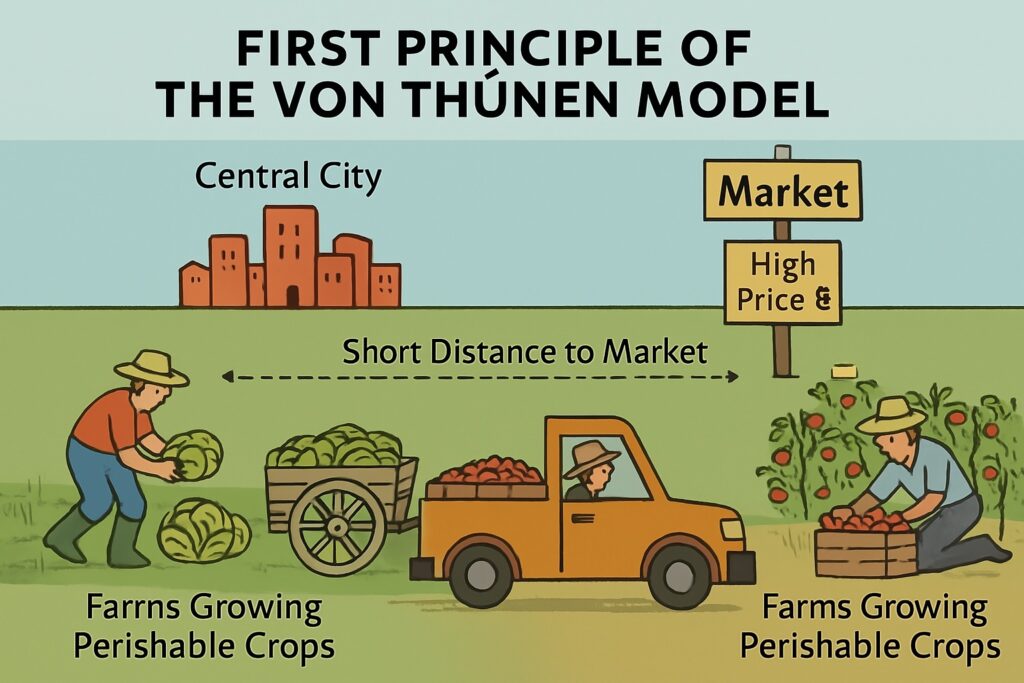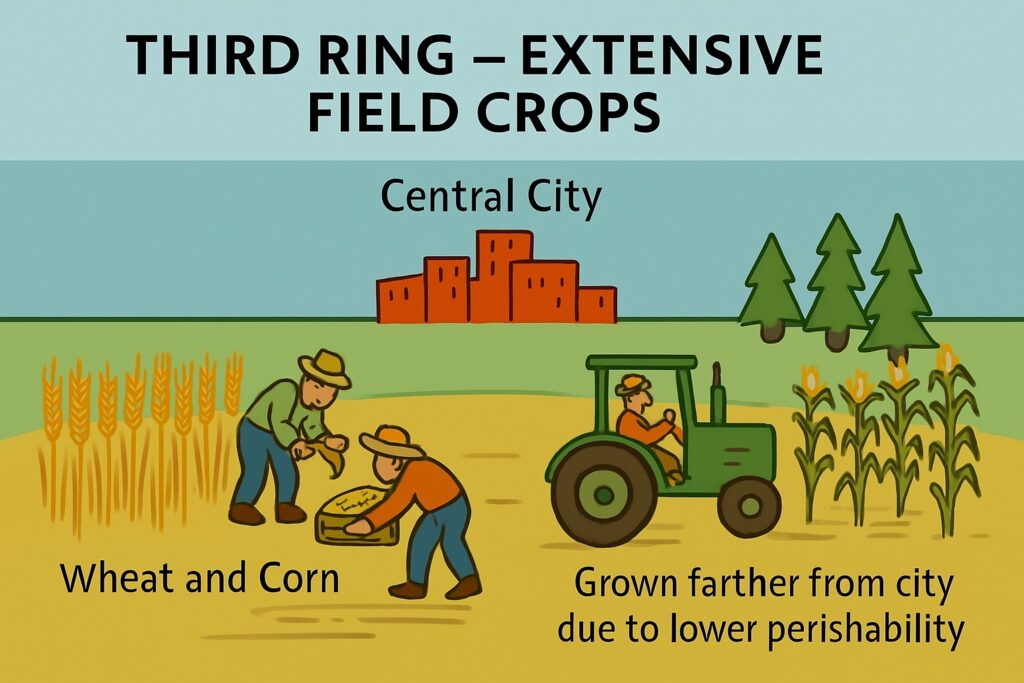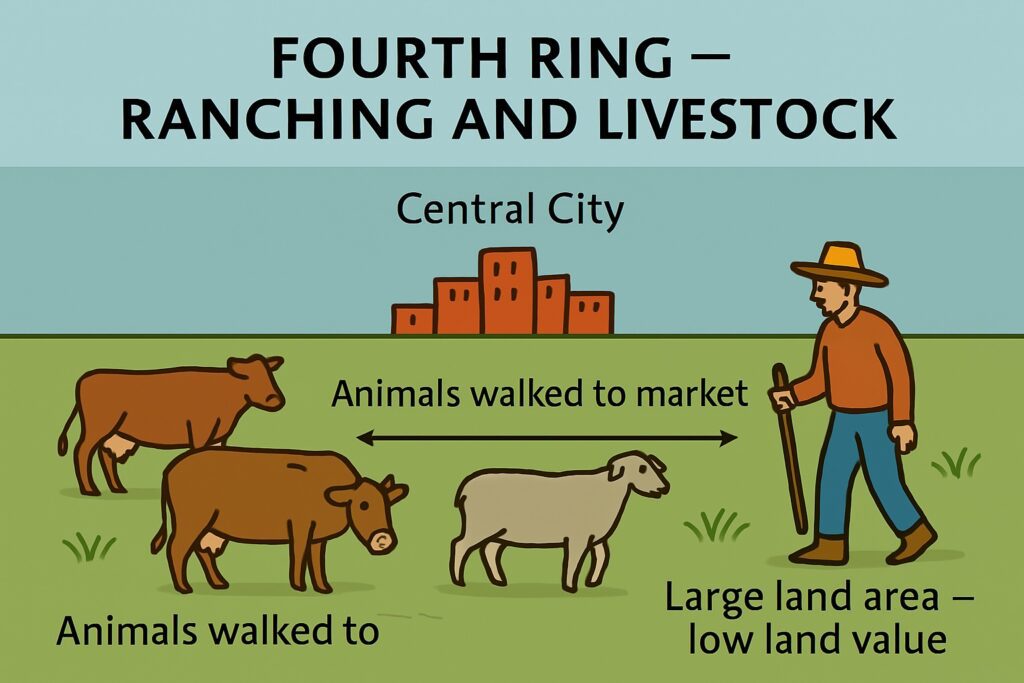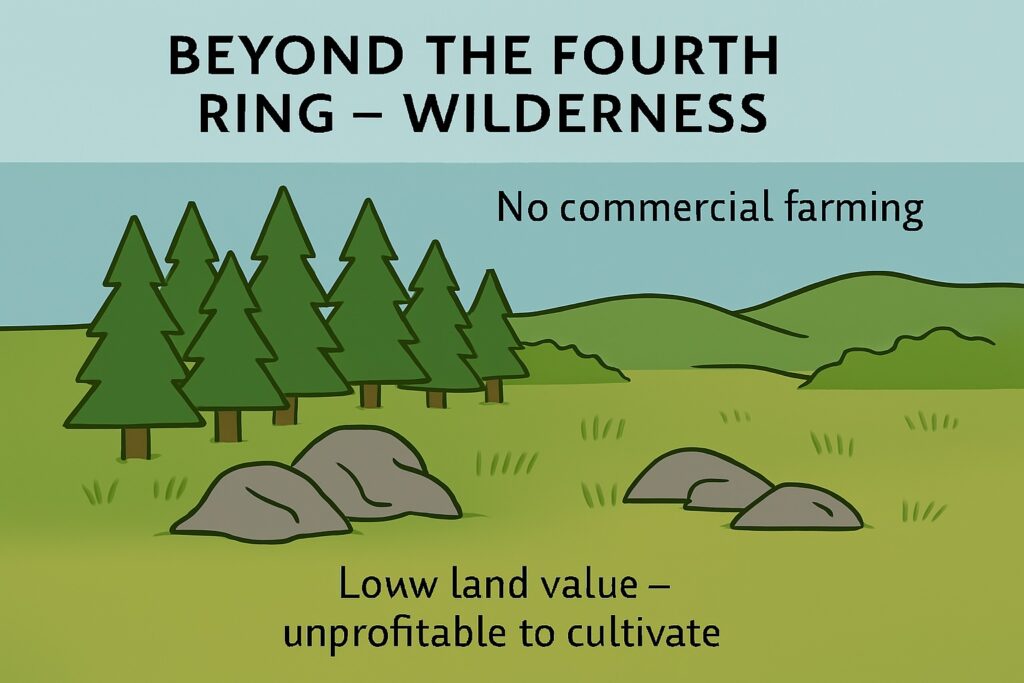Von Thunen Model of Agricultural Location was developed by Johann Heinrich von Thunen in 1826. It provides insights into how agricultural activities are spatially organized in relation to market forces and transportation costs. This model is based on the assumption that farmers seek to maximize profits and make rational decisions about what to produce and where to locate their farms.
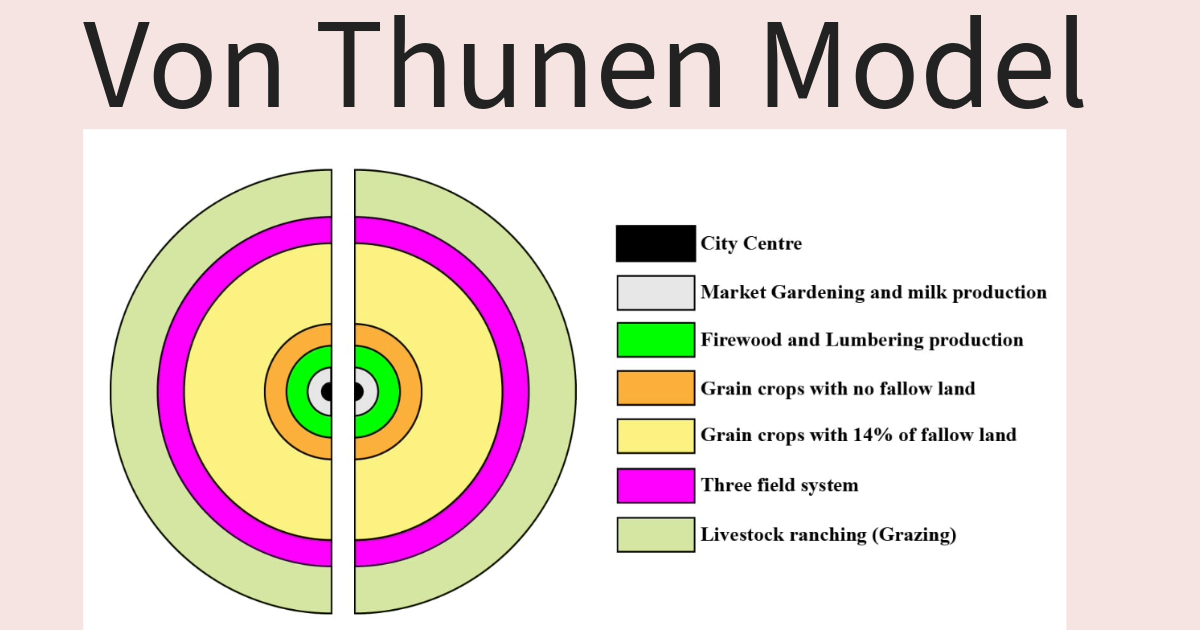
Table of Contents
The Basic Principles of the Model
The model is based on the idea that farmers will choose to cultivate different crops or raise different livestock depending on the distance from the city and the cost of transportation. Von Thunen’s model assumes that the agricultural land is a flat, uniform plain with no physical barriers such as mountains or rivers.
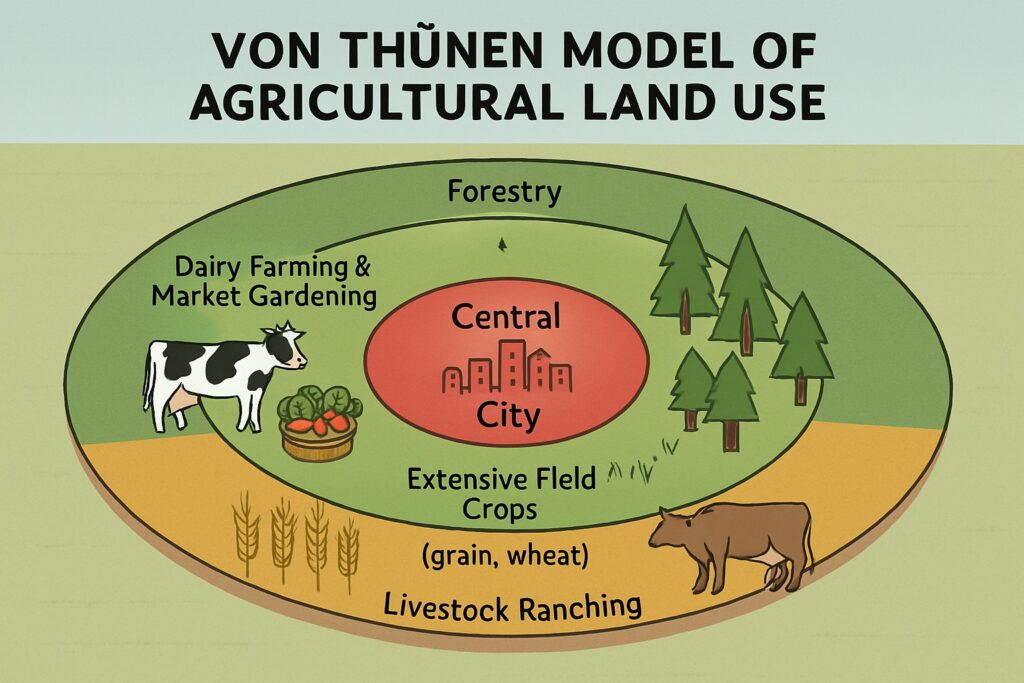
First Ring: Market Gardening and Dairy
-
-
Includes fruits, vegetables, milk (highly perishable items).
-
These need to reach the market quickly due to spoilage.
-
High transport cost and high land value.

First Circle of Von Thunen Model
-
Second Ring: Forestry
-
-
Supplies wood for fuel and construction.
-
Heavy and bulky to transport.
-
Located close to the city to minimize cost.

Second Circle
-
Third Ring: Extensive Field Crops
-
-
Grains like wheat and corn (less perishable).
-
Requires more land; can be grown further away from the city.

Third Ring
-
Fourth Ring – Ranching and Livestock
-
-
Animals can be walked to the market, reducing transport costs.
-
Requires large areas of land; low land value areas are preferred.

Fourth Ring
-
Beyond the Fourth Ring: Wilderness
-
-
Land is not used for commercial agriculture due to low profitability.

Beyond Fourth Ring
-
Key Assumptions
- Isolated State: The model assumes a hypothetical, isolated state with no external influences or trade.
- Uniform Environment: The land within the state is uniform in terms of climate, soil fertility, and topography.
- Single Market: There is a single market located at the center of the state, and transportation costs are solely determined by the distance to this market.
- Homogeneous Transportation: Transport costs are directly related to the distance from the market and are constant throughout the state.
- Profit Maximization: Farmers aim to maximize profits by minimizing production costs, which include land rent and transportation costs.
Main Concepts
Rings of Agricultural Activities: Von Thunen’s model suggests that different types of agricultural activities are organized into concentric rings around the central market. The rings are characterized by the intensity of land use and the type of agricultural production.
- Market Gardening and Dairying: These high-value, perishable goods with high transportation costs are located close to the market to minimize transportation time and costs.
- Forests: Due to the high transportation costs and low land rent, forests are located further away from the market.
- Grain Farming: Grain crops with lower transportation costs but higher land rent are located farther away from the market than market gardening and dairying activities.
Land Rent Gradient
The model suggests that land rent decreases as one moves away from the market. The proximity to the market is a key determinant of land rent because transportation costs increase with distance. Farmers make decisions about land use based on the trade-off between land rent and transportation costs.
Importance of Transportation Costs
The model emphasizes the significant role of transportation costs in determining the spatial organization of agricultural activities. Higher-value and perishable goods, which incur higher transportation costs, are located closer to the market to minimize losses and maximize profits.
Dynamic Nature
The model assumes that farmers are rational decision-makers who adjust their land use and crop choices based on changing market conditions, transportation costs, and profitability.
Applications of the Model
The model has been used to explain the patterns of land use in agricultural regions around the world. It has also been used to inform policy decisions related to land use planning, agricultural development, and transportation infrastructure.
Critiques of Von Thunen Model of Agricultural Location
Critics of the model argue that it oversimplifies the complex economic, social, and environmental factors that influence agricultural land use patterns. The model does not take into account factors such as climate, soil quality, land tenure, and government policies that can have a significant impact on agricultural land use.
Limitations of Von Thunen Model of Agricultural Location
While Von Thünen’s model provides valuable insights into agricultural location, it has several limitations:
- Oversimplification: The model assumes a uniform environment and does not consider factors such as variations in soil quality, climate, and topography.
- Single Market Assumption: In reality, there are multiple markets, both local and global, influencing agricultural production and location decisions.
- Ignoring Non-Agricultural Land Uses: The model focuses solely on agricultural activities and does not account for the presence of urban areas or non-agricultural land uses.
Despite these limitations, Von Thünen’s model remains influential and serves as a foundational framework for understanding the spatial organization of agricultural activities. It highlights the importance of transportation costs, market proximity, and land rent in shaping agricultural location decisions. See Locational Theory
Read: Geography Notes
